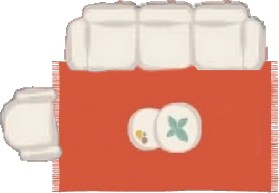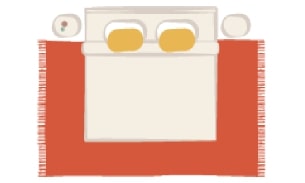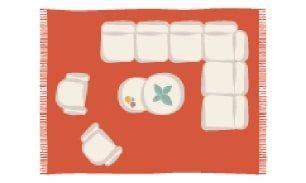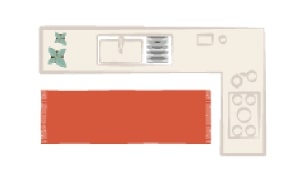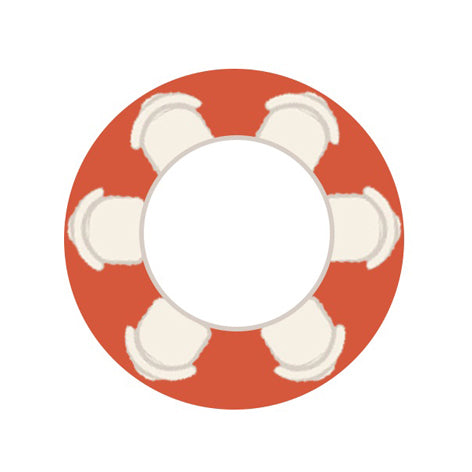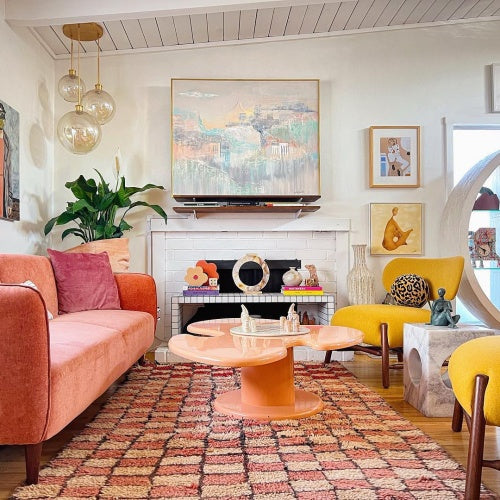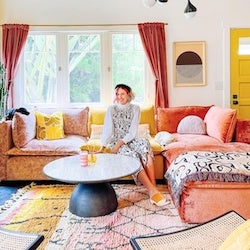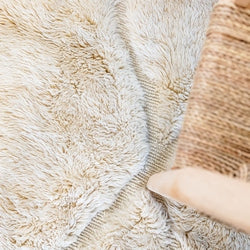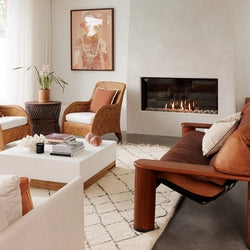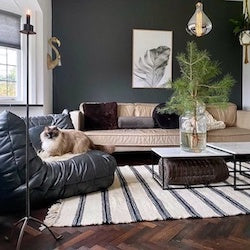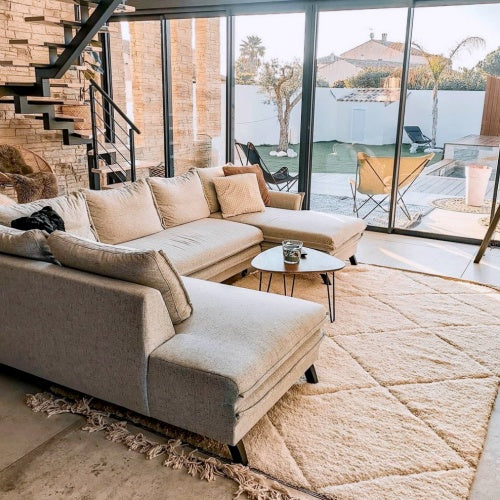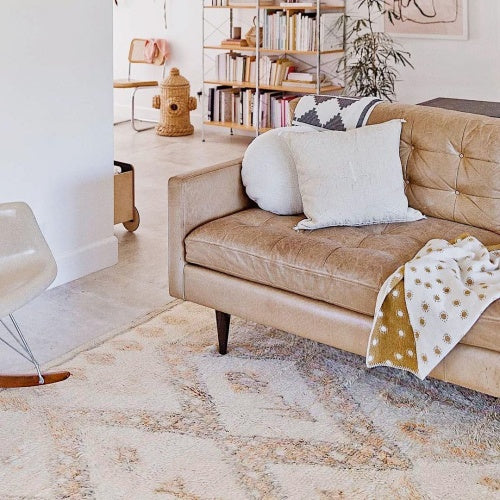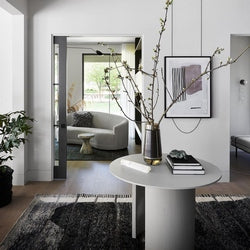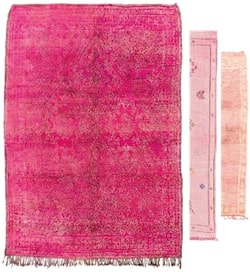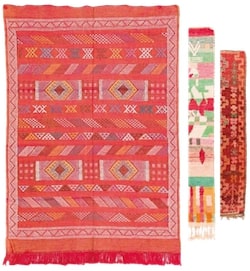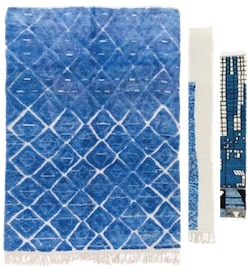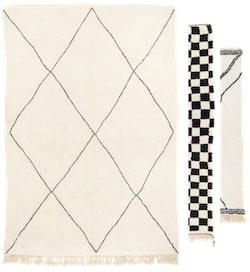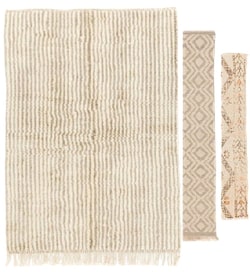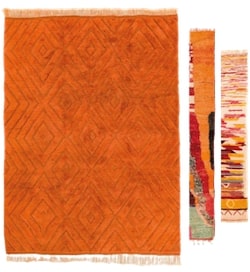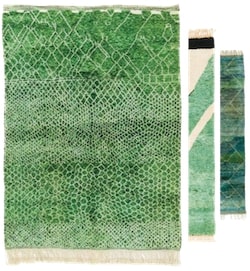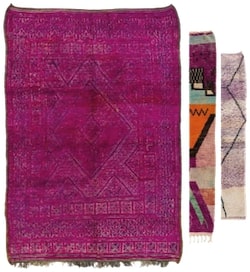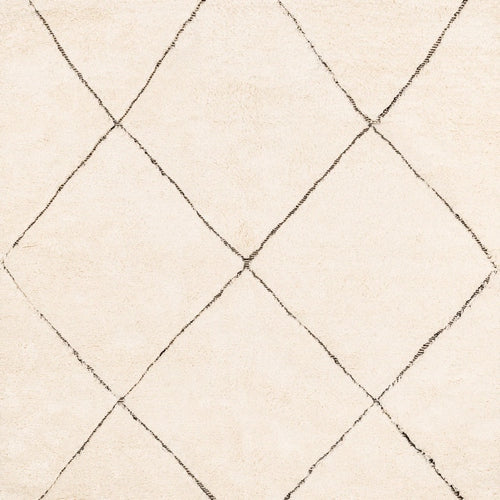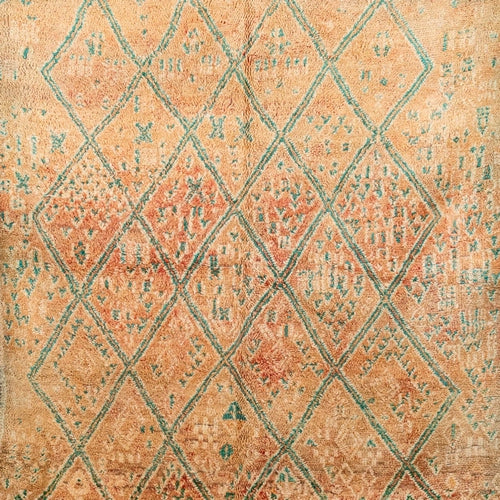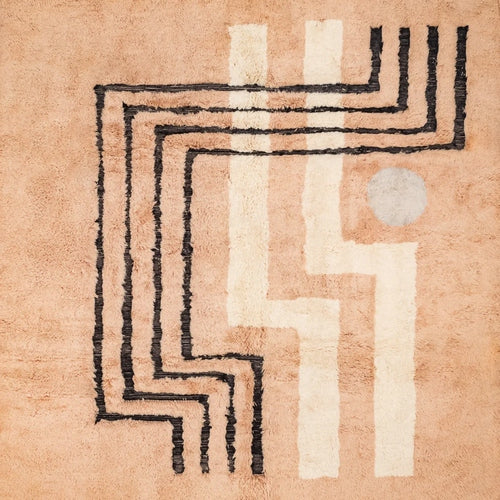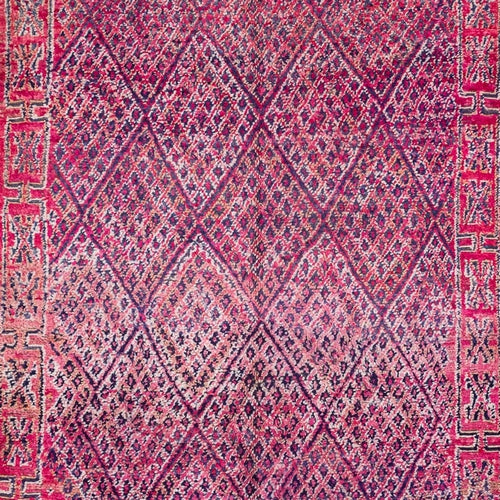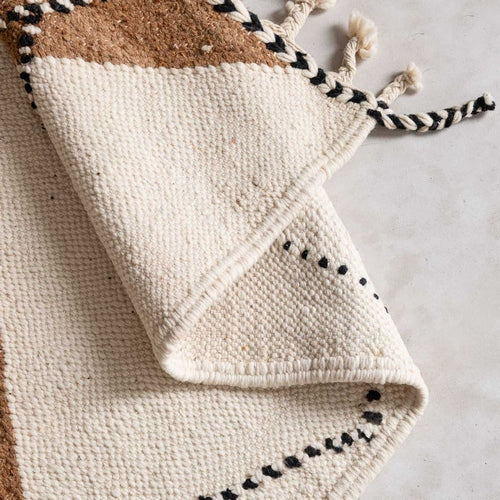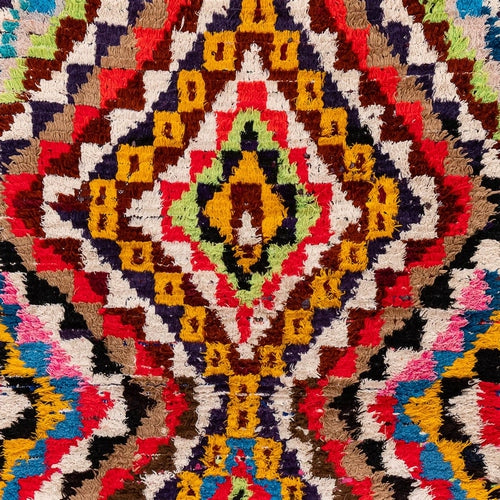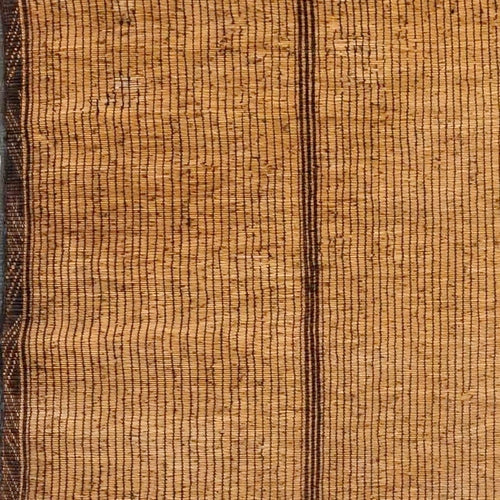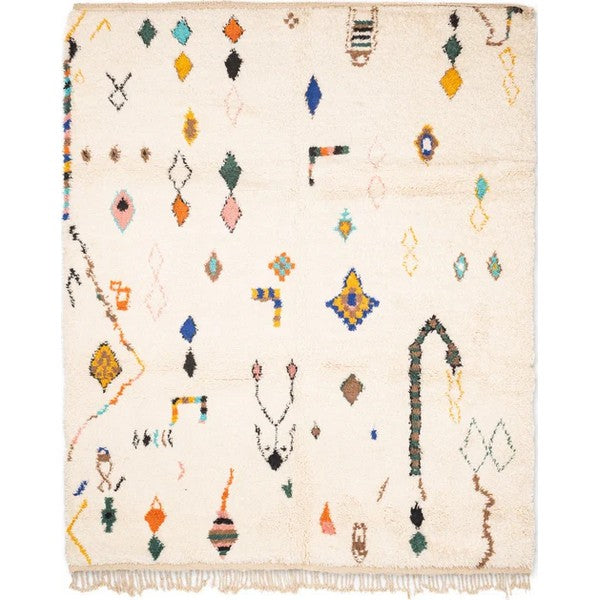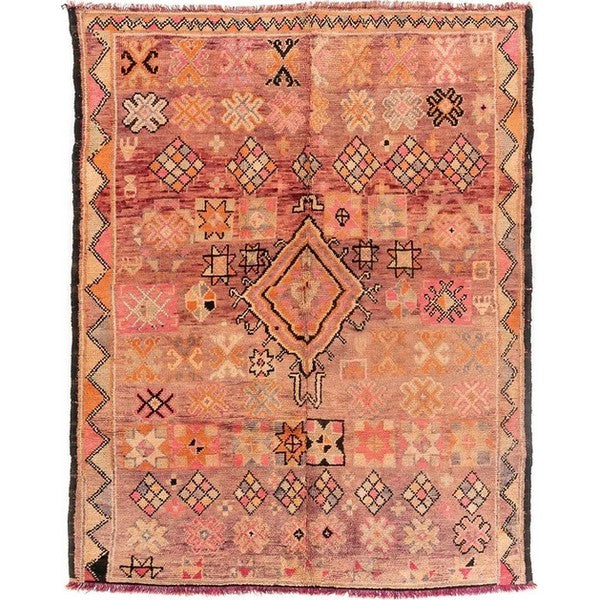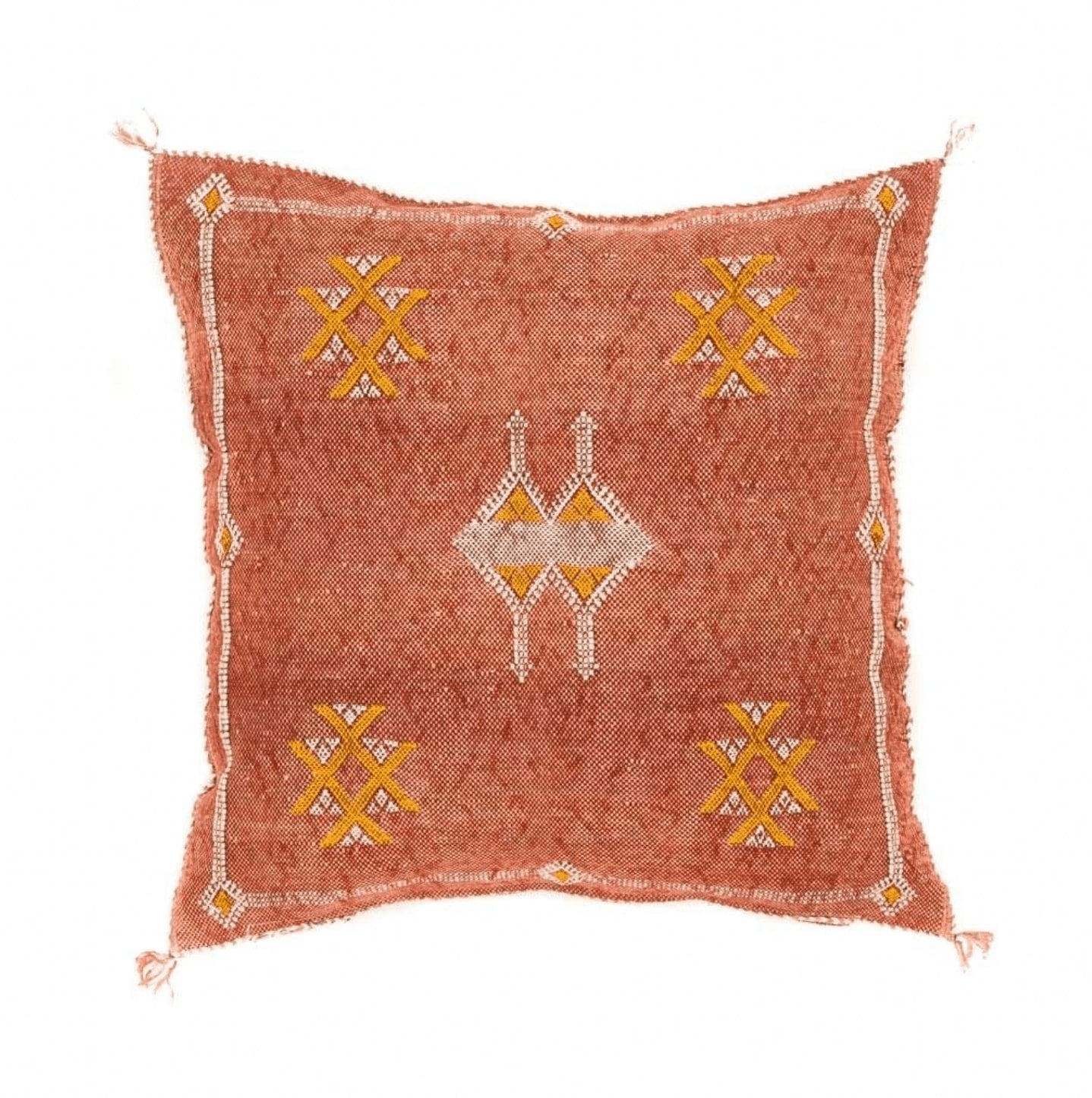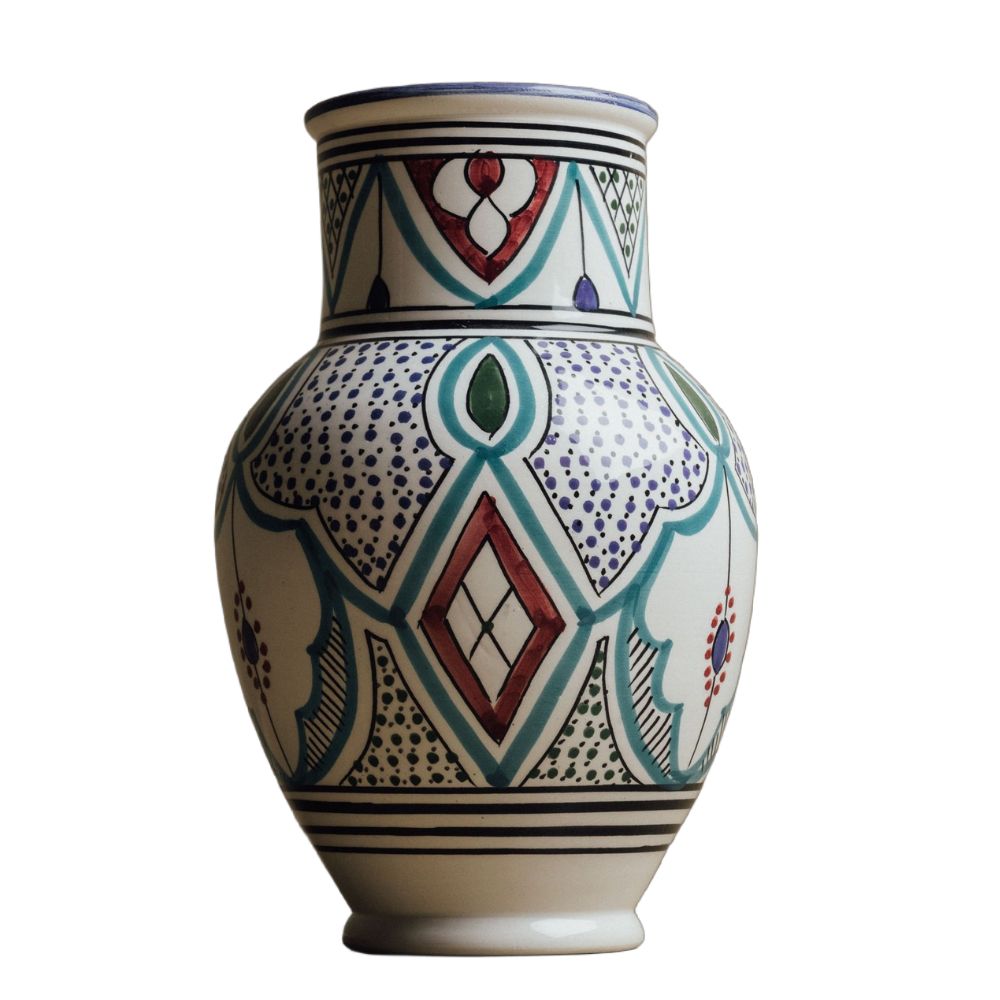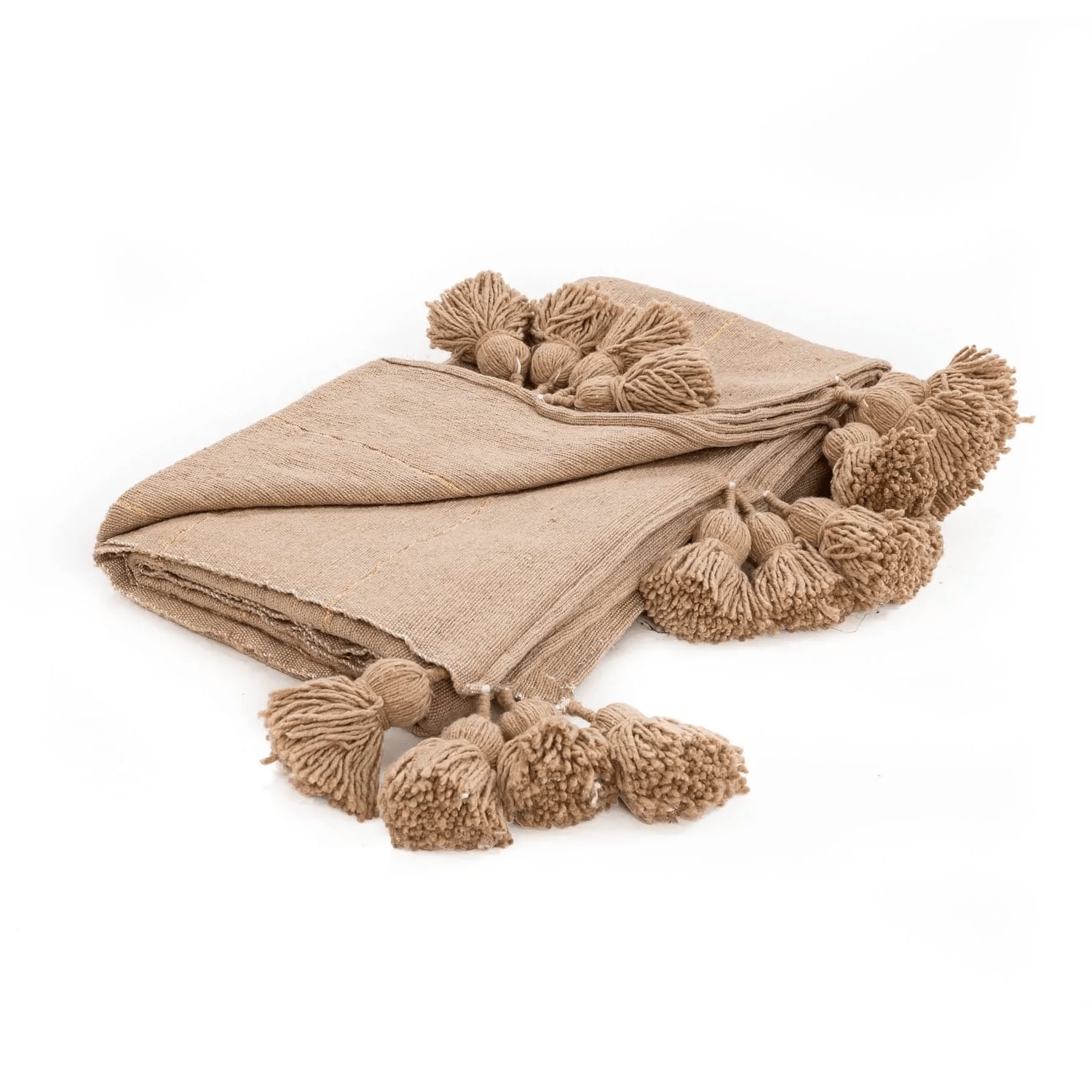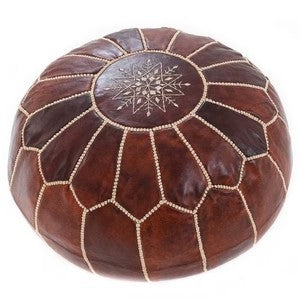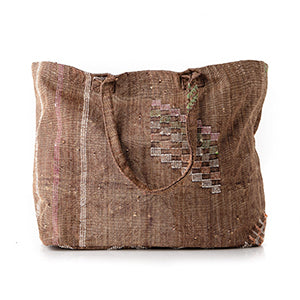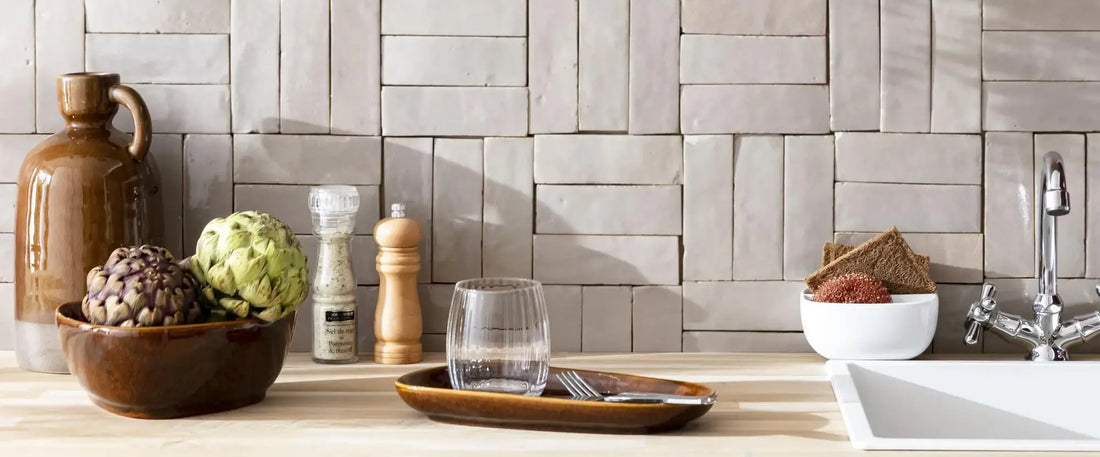Imagine stepping into a room adorned with shimmering, hand-cut tiles that catch the light in a subtle dance of color and gloss. This is the magic of Moroccan Zellige tiles, a timeless element of design that merges artisan tradition with modern style. In Moroccan tile home décor, Zellige stands out for its rich history, vibrant handcrafted character, and endless design possibilities. In this article, we’ll explore what Zellige tiles are (and why designers adore them), delve into their aesthetic and cultural appeal, and share inspiring Zellige tile ideas for every area of your home – from kitchens and bathrooms to fireplaces, entryways, and accent walls. By the end, you’ll see how these “perfectly imperfect” tiles can transform your space, and you’ll discover how to bring authentic Benisouk Zellige tiles into your own home for a personal touch of Morocco.
What Are Moroccan Zellige Tiles? A History of Artisanal Craftsmanship
Moroccan Zellige (pronounced zell-idge) refers to a traditional style of mosaic tilework native to Morocco. Each Zellige tile is a small handcrafted Moroccan tile made from local clay that is hand-cut, glazed, and kiln-fired. This painstaking process results in a tile surface with slight irregularities – no two pieces are exactly alike. In fact, the term “Zellige” comes from the Arabic al-zulayj, meaning “little polished stone,” a nod to the tile’s glassy glaze and gem-like finish. These tiles have been crafted by skilled artisans for centuries, dating back as far as the 10th or 12th century in the North African region.
Originating in the city of Fez, Zellige tilework became a cornerstone of Islamic art and Moroccan architecture. Because figurative art was traditionally avoided in Islamic design, artisans turned to geometry and pattern – and Zellige mosaics were born. Early Zellige tiles were often chiseled into geometric shapes (stars, crosses, and lozenges) and assembled into intricate mosaics to adorn palace walls, fountains, and mosque floors. Lauded historic examples include the breathtaking tilework of the Alhambra Palace in Granada and the ornate madrasas of Fes and Meknes. The craft has been lovingly passed down through generations of Moroccan families, keeping the techniques and aesthetics alive.
Unique features. What truly sets Zellige apart from ordinary ceramic tile is its hand-touched character. Artisans mold and cut each tile by hand, so you’ll notice subtle variations in size and shape. The glaze on Zellige tiles is often slightly uneven, creating a variety of tone, depth, and shine across a single batch. Rather than a uniform color, you get a gorgeous range of shades – for example, a set of aqua Zellige may include everything from pale teal to deep turquoise, each tile catching the light differently. This “perfectly imperfect” look is highly prized by designers and home décor enthusiasts because it lends soul and authenticity to a space. In a world of mass-produced materials, Zellige tiles proudly display their handmade origin through tiny imperfections like slight color fluctuations, hairline crazing in the glaze, or uneven edges. In fact, those quirks are hallmarks of genuine Zellige – the tiles should look a bit irregular and wonderfully shiny. When installed, they are typically set almost edge-to-edge with very thin grout lines, creating a continuous gleaming surface of pattern and color (the tight placement helps the mosaic read as one cohesive design, a technique used in traditional Moroccan interiors).
Historically, Zellige tiles were crafted in a limited palette of earthy tones, cobalt blues, forest greens, and pristine whites – colors derived from natural glaze pigments. Today, however, you can find Zellige in an array of colors from blush pinks and indigos to sleek charcoal or pure white. Each hue carries the same depth and variation that make these tiles so special. Whether arranged in classic geometric motifs or in simple layouts like subway tile patterns, Zellige brings an artisanal touch that immediately draws the eye. It’s no surprise that Zellige tiles have seen a resurgence in popularity in recent years
. Designers around the world are embracing the material for its timeless aesthetic and ability to make a space feel curated and unique – a little slice of Moroccan artistry under your own roof.
The Aesthetic and Cultural Appeal of Zellige Tiles
There’s a reason style enthusiasts and globetrotters alike are in love with Zellige: these tiles tell a story. Aesthetically, Zellige tiles introduce texture, color, and shine in a way few other materials can. Thanks to their hand-glazed finish, Zellige tiles have a subtle gloss that plays with light, making surfaces come alive. Sunlight or candlelight will dance off the undulating surfaces of the tiles, giving your walls or backsplash a dynamic look throughout the day. And because each tile has slight color variations, a wall tiled in Zellige never looks flat or one-note – it’s full of depth and character even if you use a single color. For example, a simple white Zellige tile backsplash will still showcase gentle contrasts of off-white, ivory, and cream within each glossy tile, creating a rich tapestry of tone-on-tone beauty. On the other end, if you choose deep green or blue Zellige, the effect can be jewel-like – the glazes catch reflections and almost sparkle, instantly becoming a focal point in the room.
From a cultural perspective, incorporating Zellige tiles into your home is a way to celebrate Moroccan heritage and craftsmanship. Each tile is the result of an artisan’s touch and a tradition honed over centuries. When you feature Zellige, you’re not just adding decoration; you’re inviting a bit of Moroccan artistry and its history into your space. The patterns and techniques of Zellige tilework have strong ties to Moorish design and Islamic geometric art, which gives them a distinct global elegance. Even in contemporary or minimalist settings, Zellige tiles introduce an element of warmth and worldly sophistication, telling a story of far-off places and timeless design principles.
Color options and texture. One of the joys of Zellige is the freedom to play with color. Do you want a serene, spa-like ambience? Consider soft neutrals like creamy white, sand, or sage green Zellige, which echo the natural hues of Moroccan landscapes. Prefer a bold boho statement? Try a mix of emerald, cobalt, and golden-yellow tiles to create a vibrant mosaic that energizes the room. Because the glazes are often translucent, many Zellige tiles have a luminous quality – intense colors that still feel organic and not overly saturated. The texture of Zellige is also a key part of its appeal. Run your hand over a Zellige-tiled surface and you might feel gentle unevenness – a reminder that it was shaped by hand, not machine. This texture means that even a single-color installation provides visual interest; the light hits each tile a bit differently, revealing the artisan’s hand in every piece.
Artisanal value. In an era of factory-made everything, Zellige tiles are refreshingly handcrafted. No two tiles are identical, and that’s exactly the point. This artisanal quality makes your home décor feel personalized and unique. Designers often talk about adding “soul” or “authenticity” to a space – using Zellige is one of the easiest ways to do that because of its obvious handmade nature. It’s a material that carries the imperfections of human touch – something deeply comforting and grounding in a home. Additionally, choosing authentic Moroccan Zellige (like those from Benisouk’s collections) means you are supporting traditional craftsmanship. Each purchase helps sustain the artisans who pour their skill and heritage into making these tiles. There’s an intangible feel-good factor in that – your beautiful kitchen backsplash or bathroom wall isn’t just a décor decision, it’s a connection to a cultural legacy.
In short, Zellige tiles embody a blend of beauty, history, and craft. They are as much about feeling as about looking. A wall of Zellige doesn’t just look interesting – it feels warm, inviting, and storied. Now, let’s explore how you can bring this appeal into various rooms of your home.
Zellige Tile Ideas for Different Areas of Your Home
One of the greatest strengths of Moroccan Zellige is its versatility. These tiles can be used in almost any space, indoors or even outdoors, to add instant character. Whether your style is modern, rustic, or eclectic, Zellige adapts beautifully. Here are some inspired ideas and practical tips on incorporating Zellige tiles in key areas of the home. From kitchens and bathrooms to fireplaces, entryways, and accent walls, you’ll see how Zellige can elevate each space:
1. Kitchens: Backsplashes and Beyond
Kitchen Backsplash: The kitchen is a popular place to showcase Zellige, especially as a backsplash behind the stove or sink. A Zellige tile backsplash can truly steal the show in your kitchen. The tiles’ glossy, uneven surface not only adds visual interest but also offers practical benefits – it’s easy to wipe clean, which is perfect for cooking splatters. Consider using handcrafted Moroccan tiles in a color that complements your cabinetry: white or ivory Zellige for a bright, open feel, or perhaps a bold teal or jade green Zellige tile to create a Moroccan bistro vibe. Because Zellige tiles have such rich variation, even a simple subway pattern (e.g. 4x4” squares or 2x6” rectangles arranged in a staggered grid) will look luxuriously detailed. If your kitchen has open shelving, extending Zellige tiles from the countertop all the way up to the ceiling behind the shelves can create a stunning backdrop for your dishes and decor. The light catching each tile will make your everyday kitchenware look artfully displayed.
Countertops and Islands: While backsplashes are the go-to, don’t overlook other kitchen surfaces. Zellige tiles can be used on a kitchen island base or the sides of a kitchen peninsula to add a decorative accent that ties into the backsplash. For instance, you might tile the front of your island with the same color Zellige as your backsplash, creating continuity in the design. This works especially well if you have a bar area or breakfast nook as part of the island – the Zellige will add a beautiful detail for guests seated there to admire. Some adventurous homeowners even use Zellige for countertops or tabletop surfaces. Traditionally, Moroccan tables and even counters were sometimes made with Zellige mosaics. If you choose to do this, opt for the thicker variety of Zellige or its cousin, Bejmat (which is the thicker, unglazed terracotta tile), and ensure it’s well-sealed for durability. Imagine a small café table in the corner of your kitchen covered in a colorful Zellige mosaic – it could become your favorite morning coffee spot!
Design Tip: When using Zellige in the kitchen, lighting is key. Install under-cabinet lighting or pendant lights to really enhance the reflective glaze of the tiles. The glow will bring out the depth of each tile’s color and make the whole space feel warm. Also, consider pairing Zellige with natural materials like wood and stone – the contrast of glossy tile with matte wood grain or marble is simply gorgeous.
2. Beautiful Bathrooms and Spa-Like Retreats
Bathrooms and Zellige tiles are a match made in heaven. The inherent irregularities and gloss of Zellige create a water-kissed look that’s perfect for spaces dedicated to rejuvenation. In fact, using Zellige is an easy way to make your bathroom feel like a luxurious Moroccan hammam (bathhouse) or a spa retreat.
Shower Walls & Tub Surrounds: Because Zellige tiles are water-resistant when properly installed and sealed, they are ideal for shower enclosures, tub surrounds, and bathroom accent walls. Tiling an entire shower in Zellige – from the walls to the ceiling – can transform it into a jewel box. For a tranquil vibe, you might choose soft blue-green tiles reminiscent of sea glass or the famous turquoise pools of Moroccan riads. The glossy Zellige surface will reflect the water and light, creating a shimmering effect while you shower. Alternatively, a feature wall of Zellige behind a freestanding bathtub can serve as a stunning focal point. Picture a deep emerald green or rich navy Zellige wall behind a white tub – it creates instant drama and elegance, enveloping the space in color and character.
Vanity Backsplash & Details: If you prefer to start small, use Zellige as a backsplash behind your bathroom sink or vanity. Even a few rows of 4x4” Zellige tiles in a fun color like salmon pink, sky blue, or simple pearly white will elevate the vanity area and protect the wall from water splashes. You can also line the niche shelves in your shower or the backs of built-in shelving with Zellige for a surprise pop of color and texture. Little details like a mirror framed with Zellige mosaic pieces or a border of Zellige along the countertop edge can tie the look together (indeed, Zellige tiles have historically been used to frame mirrors and decorate furniture pieces).
Flooring Consideration: Traditional Zellige (glazed) can be used on bathroom floors, but be cautious as the glossy finish may be slippery when wet. If you love the look for flooring, opt for Zellige in a smaller format (like tiny mosaics) which means more grout lines for grip, or use unglazed Bejmat tiles in a coordinating color for the floor to achieve a similar handcrafted effect with better slip resistance. Many Moroccan bathrooms use a combination: Zellige on walls, Bejmat on floors.
Atmosphere: To amplify the spa-like atmosphere, pair Zellige tiles with warm, natural elements. Think about incorporating cedar wood accents, brass or copper fixtures, and plenty of candles. The interplay of the candlelight with the Zellige’s reflective surface at night is pure magic – your bathroom will glow. With Zellige, even a small bathroom can feel like an exotic getaway.
3. Striking Fireplace Surrounds
If you’re looking to create a captivating focal point in your living room or outdoor patio, consider dressing up your fireplace surround with Moroccan Zellige tiles. Fireplaces naturally draw attention; cladding them in Zellige elevates them from merely cozy to architecturally stunning. Whether your style is farmhouse, mid-century, or Mediterranean, Zellige can adapt with the right color and pattern.
Fireplace Face and Hearth: The area immediately surrounding the fireplace opening (often called the fireplace surround or face) is a prime spot for tiling. Using Zellige here turns the hearth into a piece of art. For a classic look, you might use white or cream Zellige tiles around a fireplace – the subtle shade variations and glossy finish will still make the statement, but in a soft, versatile way that complements any decor. If you want the fireplace to really pop, choose a bold hue like azure blue, mustard yellow, or even a mix of colors to create a mosaic pattern. Moroccan design often embraces vibrant, mixed-color mosaics, so you could channel that by combining a few colors in a geometric layout.
Don’t forget the hearth (the floor area in front of the fireplace) if it’s raised or even with the floor – you can tile that surface with Zellige or coordinating terracotta as well, creating a cohesive look. A tiled hearth in a contrasting color (for example, white Zellige around the firebox and a deep blue tiled hearth extension) can be very chic. Since Zellige tiles are fired at high temperatures, they can handle the moderate heat exposure on a fireplace surround with no problem.
Style Harmony: Zellige fireplaces work beautifully in both traditional and modern interiors. In a contemporary living room with clean lines and neutral furniture, a Zellige-tiled fireplace injects personality and warmth without overwhelming the simplicity of the space. On the other hand, in a bohemian or maximalist room, a brightly tiled fireplace fits right in with layered textures and colors. You can also use Zellige to echo other elements in the room: for instance, if you have Zellige in the kitchen, using the same color on the fireplace in an open-concept layout helps carry a theme throughout the house.
Practical Tip: Use a skilled installer for fireplace projects. The many slight variations in handmade tile can be tricky around corners and edges. A professional will know how to arrange the tiles to maintain tight joints and work with the material’s quirks. The result will be a seamless, beautifully finished centerpiece that looks as if it was always part of your home. Add a few Moroccan lanterns or poufs in the room to echo the tile’s heritage, and you’ll have a truly inviting space for gatherings.
4. Inviting Entryways and Hallways
Your entryway is the first impression of your home – why not make it an unforgettable one? Moroccan Zellige tiles can turn a simple entry or hallway into a conversation piece that wows every guest who walks through the door. The key is to use Zellige in ways that highlight architectural features or add a splash of unexpected color and texture to this transitional space.
Entryway Floors: One striking idea is to use Zellige tiles on the floor of a foyer or vestibule. A small area just inside your front door could be tiled in a beautiful Zellige pattern, creating a “rug” effect out of tile. For example, you could lay out neutral-toned Zellige in a geometric star pattern, or use a classic Moroccan eight-point star mosaic design with contrasting colors. This kind of detail immediately signals a global, well-traveled design sensibility. If you choose floor application, consider using the thicker terracotta Zellige or Bejmat tiles for durability, and ensure a matte sealant to reduce slipperiness. The result is an entryway that is not only durable and easy to clean (muddy shoes are no match for glazed tile!) but also absolutely stunning. Guests will literally be stepping onto art.
Wall Accents and Wainscoting: If you don’t want to commit to a tiled floor, look to the walls. Zellige tiles can be applied as wainscoting (the lower half of a wall) in an entry or hallway, which protects the wall from scuffs and adds visual interest. Imagine a hallway with the lower three feet tiled in glossy indigo blue Zellige and the upper wall painted a crisp white – a gorgeous contrast that feels both classic and exotic. Another idea is to tile the wall opposite your front door, or a feature wall in your entry, from floor to ceiling in Zellige. This could be especially impactful if you have a narrow hall – the glimmer of the tiles can make the space feel wider and more open by reflecting light.
Architectural Details: Don’t forget small architectural moments. Zellige is often used in Morocco to highlight doorways, archways, and niches. You can borrow this idea by adding a border of Zellige around your front door (inside the house) or around a doorway leading from the entry into the living area. Even framing a decorative mirror or artwork in the entry with Zellige mosaic pieces can echo the theme and create cohesion. Little touches like this make your home feel thoughtfully designed.
In an entryway, consider using colors that set the tone for the rest of your decor. Earthy tones like terracotta, amber, or olive green can create a warm welcome, whereas cooler tones like aqua or grey-blue Zellige might lend a serene, reflective mood as people enter. Paired with some lush potted plants, a bench with Moroccan-patterned cushions, or a vintage kilim rug, your Zellige-clad entryway will transport everyone to a faraway riad for a moment, every time they step through the door.
5. Eye-Catching Accent Walls
If you have a room in need of a wow factor, a Zellige tile accent wall could be the answer. Accent walls are all about creating a focal point, and using Zellige tiles for this purpose adds not just color, but also texture and dimension. It’s like installing a piece of art that spans the entire wall. Here are a few places and ways you can use Zellige as an accent feature:
Living Room & Dining Room: Consider the wall behind your sofa or the wall anchoring your dining table. Tiling one of these walls from end to end in Zellige will instantly draw attention. For living rooms, a popular approach is to use a neutral or soft color Zellige (white, light grey, pale blue) in a simple layout; the texture of the tiles themselves provides plenty of interest without overwhelming the room. Your other decor – a wood coffee table, some framed prints, indoor plants – will all look elevated against the backdrop of Zellige. In a dining room, you might go bolder: perhaps a deep teal or emerald green Zellige wall behind a credenza, with a large mirror that allows the beautiful tile to reflect and double its impact. Keep the other walls a solid color to let the tile wall truly sing.
Bedroom Headboard Wall: Another great spot for a Zellige accent is behind the headboard of your bed. This can create a luxurious headboard effect even if your actual headboard is plain. For a serene bedroom, you might choose a calming color like misty grey-green or a sandy beige Zellige so that the wall has a subtle, soothing presence. The glossy tiles will catch the soft glow of bedside lamps, giving the room a romantic, intimate ambiance. If you’re feeling adventurous, a pattern or mix of colors in the bedroom can also work – imagine a boho-chic bedroom with a patchwork of pastel Zellige tiles behind the bed, paired with white bedding and rattan accents.
Kitchen or Bathroom Feature: If tiling all your kitchen walls in Zellige is too much, just do one feature wall. Perhaps the wall with your kitchen window or the wall with open shelving could be tiled in a contrasting Zellige to the rest of the backsplash. In a bathroom, if you have one blank wall (say behind the toilet or a dressing area), tiling it from floor to ceiling in Zellige turns that overlooked area into something extraordinary. A floor-to-ceiling installation in a small space like a powder room can have huge impact – little rooms are great places for big design moments!
Mixing and Matching: Don’t be afraid to mix Zellige with other materials on an accent wall. You could have a half-and-half wall where the lower part is wood paneling and the upper part is Zellige, or mix Zellige with sections of painted plaster for a rustic vibe. Designers sometimes use Zellige tile ideas like creating a mural or geometric pattern within an expanse of plain tiles. For instance, you could use mostly white tiles but intersperse a few colored tiles in a deliberate pattern to create a subtle graphic on the wall. The possibilities are endless, and because Zellige is such an inherently artistic material, it encourages creativity.
Installation Note: Since an accent wall is about aesthetics, take the time to lay out your tiles (or have your installer do so) beforehand to balance color variations and any pattern you want. Shuffle the tiles from different boxes to distribute shade variations evenly – this ensures a harmonious overall look that still celebrates the diversity in the tiles.
Design Tips for Decorating with Zellige Tiles
Incorporating Zellige tiles in your home décor is an exciting creative process. Here are a few expert tips to help you get the most beautiful result:
-
Embrace Variation: Remember that color and surface variation is the hallmark of Zellige. Don’t aim for perfection; embrace the perfectly imperfect look. Once installed, those slight irregularities in tone will create a rich, textured effect that machine-made tiles can’t replicate. If you’re ever unsure, step back and view the whole area – you’ll see how the tiles come together as a gorgeous mosaic of shades.
-
Choose Complementary Colors: If you’re new to Zellige, you might start with neutral colors (white, ivory, grey, beige) which work with any style and allow you to appreciate the texture without the commitment to a bold color. Neutral Zellige tiles offer a calm backdrop and can make a space feel bright and open. On the other hand, if you love color, pick a hue that complements your existing palette. For example, a kitchen with blue accents could be enhanced with teal or seafoam Zellige, whereas an earthy-toned living room might be accented with warm amber or burgundy tiles.
-
Balance Bold Patterns: If you opt for intricate patterns or vivid colors with your Zellige, balance them with simpler surrounding decor. Solid-colored textiles, minimal window treatments, and understated furniture will let your Zellige tilework be the star. Conversely, if your Zellige installation is a subtle solid color, you can play up patterns in other accents (rugs, pillows) for a layered look.
-
Quality Installation: Work with experienced installers who have handled Zellige or similar handcrafted tiles. The irregular edges of Zellige require a bit more patience and skill to install tightly (since Zellige is traditionally set with almost no gap). A good installer will know how to sort tiles for best color distribution and how to cut them if needed without chipping the glaze. Proper sealing after installation is also important, especially in wet areas like bathrooms or kitchens, to protect the tiles and make cleaning easy.
-
Maintenance: Zellige tiles are relatively low-maintenance. Wipe them with a mild cleanser; avoid harsh abrasives that could dull the glaze. Re-seal every couple of years if recommended (this is mostly for water-exposed areas). Thanks to their variegated look, Zellige tiles tend to camouflage spots of dirt or water droplets better than uniform tiles – another little bonus to enjoy.
By keeping these tips in mind, you’ll ensure your Zellige tile project not only looks amazing on day one, but ages gracefully and continues to charm you for years to come.
Conclusion: Bring Home the Timeless Beauty of Zellige
Warm, inviting, and rich with history – Moroccan Zellige tiles are so much more than a design trend. They are a testament to the beauty of craftsmanship and an easy way to infuse your home with personality and global flair. Whether you decide to start small with a handcrafted Moroccan tile backsplash or go big with a full accent wall, incorporating Zellige can transform ordinary rooms into inspiring sanctuaries. Every time you run your fingers across those hand-glazed surfaces or catch the glint of light off an uneven tile, you’ll be reminded of the artisans in Fez who shaped these tiles and the centuries of design tradition behind them. It’s this blend of personal touch and artistic legacy that makes living with Zellige so special.
Ready to add the enchanting look of Moroccan Zellige tiles to your own home décor? Bring a piece of this art form into your space with Benisouk’s curated Zellige tile collection. Explore our range of authentic, high-quality Zellige tiles – each one lovingly crafted by Moroccan artisans using age-old techniques. Whether you’re seeking subtle neutrals or vibrant jewel tones, the perfect tiles await to help you create your dream kitchen, bath, or accent wall. Elevate your home with the soulful elegance of Zellige. Be inspired, and let your decor tell a story that’s uniquely yours.
Transform your home, one tile at a time – visit our Benisouk Zellige tile collection to get started.


